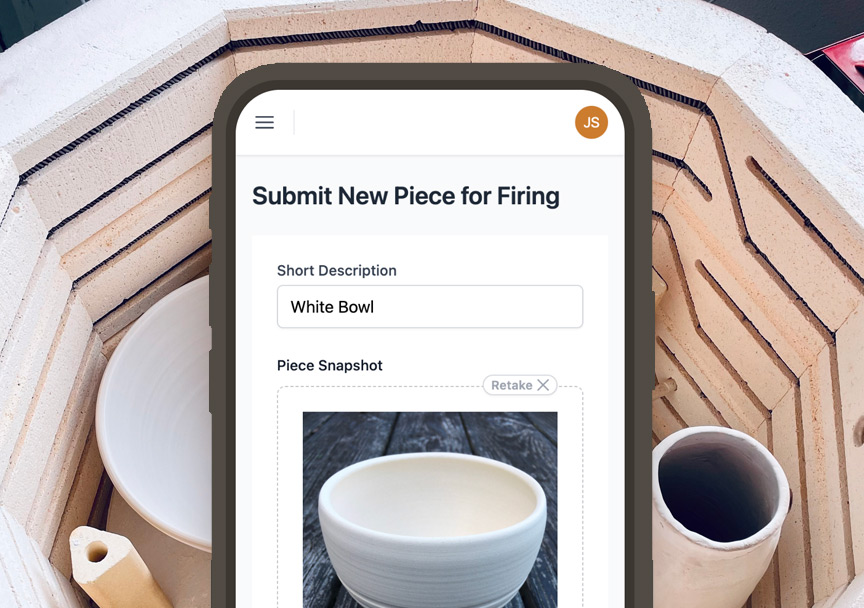Creating a pottery studio requires careful planning, creativity, and a strong understanding of the learning process. The goal is to create a nurturing environment where students can delve into the world of pottery, learning and practicing in a space that encourages growth. It should blend functionality and inspiration, be equipped with the right tools, and is arranged for optimal use. This includes good lighting, adequate ventilation, ample storage for materials and tools, waterproof flooring for easy clean-ups, and comfortable seating. The space should also be versatile enough to facilitate demonstrations, crafting sessions, and group discussions.
Whether you're a seasoned potter or a beginner, this guide will help you design a studio that enhances learning and the development of pottery skills.
Effective Space & Layout Planning
The first step in designing your pottery studio is effective space planning. A successful studio design is one that merges functionality with an atmosphere conducive to creativity and learning. The seating arrangement should be set up to foster group interaction and allow clear visibility for demonstrations - think semi-circle or U-shaped configurations.
Storage is another key factor. Shelving units should be implemented to store personal tools, communal supplies, and works in progress, keeping the space tidy and organized. Consider also the workflow within the studio. Pottery wheels, kilns, and glazing stations should be strategically placed to allow for efficient movement and minimal disruption. A well-planned studio should be a dynamic space that evolves with the needs of its students, making them feel comfortable and supported in their artistic journey.
Appropriate Equipment and Tools
A pottery studio needs to be equipped with the right tools and equipment. This includes clay preparation tools, pottery wheels, and kilns. These tools and equipment are fundamental to the pottery-making process:
- Clay Preparation: This involves space for kneading and shaping the clay before it is placed on the wheel.
- Pottery Wheels: This tool is used to shape the clay into the desired form.
- Kilns: This is where the clay transforms under intense heat.
Lighting and Ventilation
Good lighting and ventilation are essential components of a successful pottery studio design. Natural lighting is always preferable as it brings out the true colors of the clay, providing a more accurate view for glazing and painting. However, for times when natural light isn't available, sufficient artificial lighting should be installed to prevent eye strain.
Pottery can involve the creation of dust and fumes, making proper ventilation crucial. Therefore, consider installing exhaust fans or air purifiers to maintain healthy air quality in the studio. A mindful design approach ensures that your pottery studio is a space for creation and an environment that prioritizes health and safety.
Classroom Layout
The layout of your teaching area should be designed to encourage creativity and facilitate learning. This could mean arranging desks in a circular or U-shaped formation to promote collaborative learning and easy communication.
Ensure that students have easy access to pottery wheels, kilns, and other essential tools. Additionally, you should provide areas for drying and storing works in progress. This way, students can work at their own pace, creating a more relaxed and inclusive learning environment. The goal is to empower students to express their creativity while fostering a sense of community within the studio.
Frequently Asked Questions
What are the safety precautions to consider when designing a pottery studio layout?
Safety is a crucial factor to consider in the design of a pottery studio. Ventilation is essential to maintain healthy air quality, while regular equipment maintenance ensures that all tools and machinery are safe to use. Fire safety measures should also be implemented, especially given the use of kilns.
How can one make a pottery studio more eco-friendly?
Creating an eco-friendly pottery studio can involve using sustainable materials for tools and equipment, opting for energy-efficient kilns, and maximizing natural light to minimize electricity use. Additionally, implementing a water conservation strategy, such as collecting and recycling clay-water runoff, can make a significant difference.
How can the design of a pottery studio foster creativity and inspiration?
The studio's design can greatly impact the level of creativity and inspiration it fosters. The choice of color can influence mood and focus, while the type and arrangement of lighting can create an atmosphere that either invigorates or relaxes. Additionally, the acoustics of the room can affect concentration and interaction.
How can the pottery studio layout accommodate both beginners and advanced students?
A thoughtful studio layout can accommodate different skill levels. Consider creating separate zones for beginners and advanced students, ensuring each group has the necessary space and resources. Good lighting is key for all areas, and a clear organization of the different stages of the pottery process - throwing, trimming, glazing, and firing - can help create an environment where all students can thrive.
Start Designing Your Pottery Studio
With careful planning and thoughtful design, your pottery studio can become a nurturing space that supports learning and creativity. Remember that your studio is not just a place to make pottery - it's a space where students can grow, learn, and express their creativity. So, get ready to start shaping your ideal pottery studio today.


